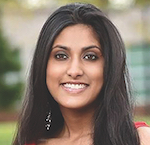 |
| Sena Pottackal |
Do you know how common disability is? Almost everyone will experience some form of disability during their lifetime, either temporary or permanent; it’s the only minority group anyone can join at any point in one’s life. More than 1.85 billion people around the globe and 61 million in the United States identify as a person with a disability. Nearly 300 million people have a visual disability, and I joined this community in 2004 when I learned I was legally blind due to a progressive eye condition called Retinitis Pigmentosa. I and other persons with disabilities face significant healthcare disparities in comparison to our non-disabled counterparts.
According to the World Health Organization, PWDs are “three times more likely to be denied healthcare and four times more likely to be treated badly in the healthcare system.” As a blind woman, I observed firsthand how inaccessible communications have hindered disability inclusion and prevented our community from obtaining equitable healthcare during and before the COVID-19 pandemic.
| This article is featured in O'Dwyer's Mar. '22 Food & Beverage PR Magazine (view PDF version) |
The blind and partially sighted community in the U.S. continues to struggle to safeguard our health due to disability exclusion and inaccessible communications throughout the pandemic response. As a simple illustration, because we rely on our sense of touch to navigate the physical world, we’re more likely to contract the virus. However, the Centers for Disease Control and Prevention ignored this and omitted blindness/low vision from the list of high-risk medical conditions prioritized as a vaccination group.
When we did become eligible, we faced accessibility barriers, further delaying our vaccination because the online vaccine portal wasn’t designed to support the inclusion of blind and partially sighted patients through screen reader navigation. [A screen reader is an assistive software, and it renders text into Braille and speech output, enabling us to access digital spaces.] On the New Jersey Department of Health Vaccination portal, I struggled to select a vaccination site because the options were displayed as colored dots on a map rather than as an accessible textual list. Therefore, I and others needed help even completing the registration process. These accessibility issues exhibited themselves throughout the country’s vaccine program.
According to Kaiser Health News, “A web accessibility nonprofit, WebAim checked COVID vaccine websites gathered by KHN from all 50 states and the District of Columbia. In January 2021, it found accessibility issues on nearly all 94 webpages, which included general vaccine information, list of vaccine providers and registration forms.” By failing to meet accessibility standards, these webpages violated both the Americans with Disabilities Act and The Rehabilitation Act of 1973.
Fortunately, the government learned from some of its past mistakes and went on to develop a screen-reader accessible website for requesting free COVID tests. However, these tests are inaccessible to blind consumers, creating another barrier to protecting our health during this pandemic. As our government and healthcare organizations prepare for future health crises, they must design websites, programs and products with better disability inclusion and accessible communications.
Even before the pandemic, blind and partially sighted patients encountered negative health interactions caused by numerous inaccessible touchpoints throughout the patient experience. Communication touchpoints are where informational transactions occur and include communication channels such as face-to-face conversations, phone calls, emails, websites, etc. From personal experience, the following is the sequence of inaccessible communication challenges we might face when attending a doctor’s appointment.
- First, it may commence with the absence of accessible mechanisms to discretely disclose our disabilities, request accommodations and independently complete intake forms. Therefore, we can’t provide our healthcare team with critical information in advance, which could have prepared them with valuable knowledge and guidance about how to provide us with a more equitable patient experience.
- Second, we may encounter medical professionals without exposure to disability etiquette or training, so they may not know how to provide verbal directions or facilitate a disability-inclusive conversation. As a result, they may invade our personal space by grabbing or touching us without permission in an attempt to direct us to an examination room. Upon arrival, they may ignore us and ask our companion questions about our health, restricting our participation in our own medical treatment.
- Finally, it may conclude with the distribution of inaccessible documents (e.g., patient summaries, doctor referrals, scripts, informational pamphlets and follow-up reminders). Because these documents are inaccessible, we must ask others to read them to us, sacrificing our privacy in exchange for access.
These are all avoidable and can be resolved through thoughtful collaboration. Therefore, healthcare professionals can provide valuable solutions by approaching inclusion gaps with an open mind, flexible attitude, and willingness to embrace the disability community’s motto, “Nothing for us without us.”
Moreover, professionals in the healthcare industry possess the power to catalyze change and curate a culture of disability inclusion by implementing accessible communications practices. The patient experience for blind and partially sighted individuals could be improved considerably by taking onboard these recommendations:
- Create an accessible communications mechanism to allow patients to electronically complete paperwork, disclose a disability and request accommodations before an appointment.
- Allow patients to choose their preferred method of communication. Because disability isn’t a monolith, preferences can vary from person to person, even if they identify as having the same disability.
- Educate staff about how to guide patients to and from an examination room with verbal directions and/or sighted guide assistance.
- When directing patients to rooms, ask us if we need help. If we say yes, ask if we’d like guidance by a sighted guide and/or verbal directions. If we request a sighted guide, offer your arm and ask from which side we’d prefer guidance. We’ll respond, hold onto your elbow on the indicated side and walk a half step behind you.
- If we request verbal directions, instruct us when to turn left or right, whether we’re approaching stairs or an obstacle; etc.
- Train staff how to facilitate an inclusive conversation during the examination. Initiate the conversation, for example, by introducing yourself with your name and title, repeating this each time you reenter a room to help us understand to whom we’re speaking. Throughout the visit, treat your patient as your primary point of contact and speak directly to them, unless they defer a particular question or the entire conversation to their companion.
- Provide accessible materials in alternative formats, such as a Braille document, an accessible electronic format and/or a large print document with at least 16-point font and high color contrast.
In addition to the blind and partially sighted community, accessible communications enable the inclusion of nearly 400 million with a hearing disability, approximately 200 million with a cognitive disability and about 18 million people with a speech-related disability. Recognizing this, Current Global conducted a study, “Digital Accessibility: The Necessity of Inclusion,” which surveyed 800 people with disabilities to understand their lived experience consuming content as PWDs. You can find out more about the implications of this study and how its results crystalize the public relations and business benefits of embracing accessible communications.
A community of nearly two billion with $13 trillion in collective buying power is hard—and foolhardy—for any company or brand to overlook. To find out more about how firms like Current Global are championing accessible communications and helping address and confront the health equity issues facing so many of us as PWDs, visit accessible-communications.com.
***
Sena Pottackal is a Junior Associate at Current Global.


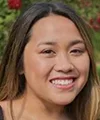 It's easy to spot whether a company's commitment to DEI is genuine or merely performative. Just as companies face backlash for neglecting DEI, they're now under scrutiny for their lack of proper understanding and action.
It's easy to spot whether a company's commitment to DEI is genuine or merely performative. Just as companies face backlash for neglecting DEI, they're now under scrutiny for their lack of proper understanding and action.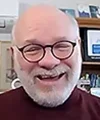 Executing DEI is not just a nice to do for agencies today, but a critical need for their business success, according to Ben Finzel, president of RENEWPR and founding partner at the Change Agencies.
Executing DEI is not just a nice to do for agencies today, but a critical need for their business success, according to Ben Finzel, president of RENEWPR and founding partner at the Change Agencies. 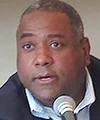 Public corporate boards in the 21st Century need major change if they want to mitigate big risks in 2024.
Public corporate boards in the 21st Century need major change if they want to mitigate big risks in 2024.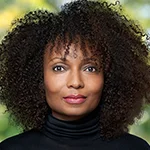 Latondra Newton has quit her chief diversity officer job at Walt Disney Co. to pursue other endeavors.
Latondra Newton has quit her chief diversity officer job at Walt Disney Co. to pursue other endeavors. Simply changing your corporate logo to a rainbow and remaining silent on the continued attacks on the LGBTQ community won’t cut it this year. Companies and organizations are going to have to take a side in this conversation.
Simply changing your corporate logo to a rainbow and remaining silent on the continued attacks on the LGBTQ community won’t cut it this year. Companies and organizations are going to have to take a side in this conversation.


 Have a comment? Send it to
Have a comment? Send it to 
No comments have been submitted for this story yet.